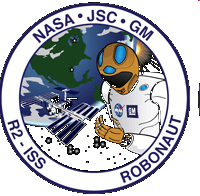| Robot in space |
| Sunday, 27 February 2011 |
|
A robot has just become a member of the International Space Station's crew and guess what .. it isn't coming back to earth, ever! It is a sad time because this is the last ever flight of the Discovery space shuttle, and as well as the six human astronauts the mission is carrying the first humanoid robot - Robonaut2 or R2 for short. In the case of R2 "humanoid" needs a free interpretation - it has a head and two arms attached to a torso. After all you don't need legs in a weightless environment.
As R2 blasted off it tweeted "I'm in space! HELLO UNIVERSE". With a name like R2 and the obvious attempts to give it a personality you can't help but think that the hand of the NASA publicity machine is somewhere behind the idea. And we refuse to repeat the obvious but cheesy statement "One small step for a robot, one giant leap for robot kind".You can follow its mostly inane twitters at http://twitter.com/AstroRobonaut The shuttle is being used to transport R2, in a packing case, to the International Space Station. Initially the robot will be fixed to a pedestal inside the ISS. Planned upgrades include the ability to move through the station and to go outside and fix things. However, with a weight of 300 pounds the danger of R2 damaging a member of the crew has to be eliminated before it can be given the freedom to roam. The robot's arms are fast and dexterous, being based on elastic joints. It has load sensors and can pick up and manipulate objects, including many specially made tools. Although its specification claims that it can lift and hold 20lbs it isn't obvious what this translates to in a weightless environment. Clearly there may also have to be changes to any earth-based manipulation software to take account of the weightless operating environment. It also has four high resolution cameras, an IR system and 38 PowerPC processors. The four video cameras provide a stereo video feed for operators and the IR system provides depth measurement - just like a Kinect. It makes use of some autonomous actions but in the main it works as a telepresence device. This approach isn't easy to extend to situations where the robot is much further away and so the goal has to be to increase the degree of autonomous action. The astronauts can also control it directly using a joystick. You can see it in action in the video:
Suggested tasks include routine maintenance such as swapping out the air filters. Considering it cost $2.5 million this makes it an expensive maintenance technician. The robot will never return to earth - the IIS is its final home.
Let's hope that that the R2 is a success, but not so much of a success that it becomes yet another reason to play down the need for humans in space. It needs to be helpful but not so good it can run the whole show on its own. Interestingly both NASA and Japan have plans to put a robot on the moon.
|
| Last Updated ( Sunday, 27 February 2011 ) |


